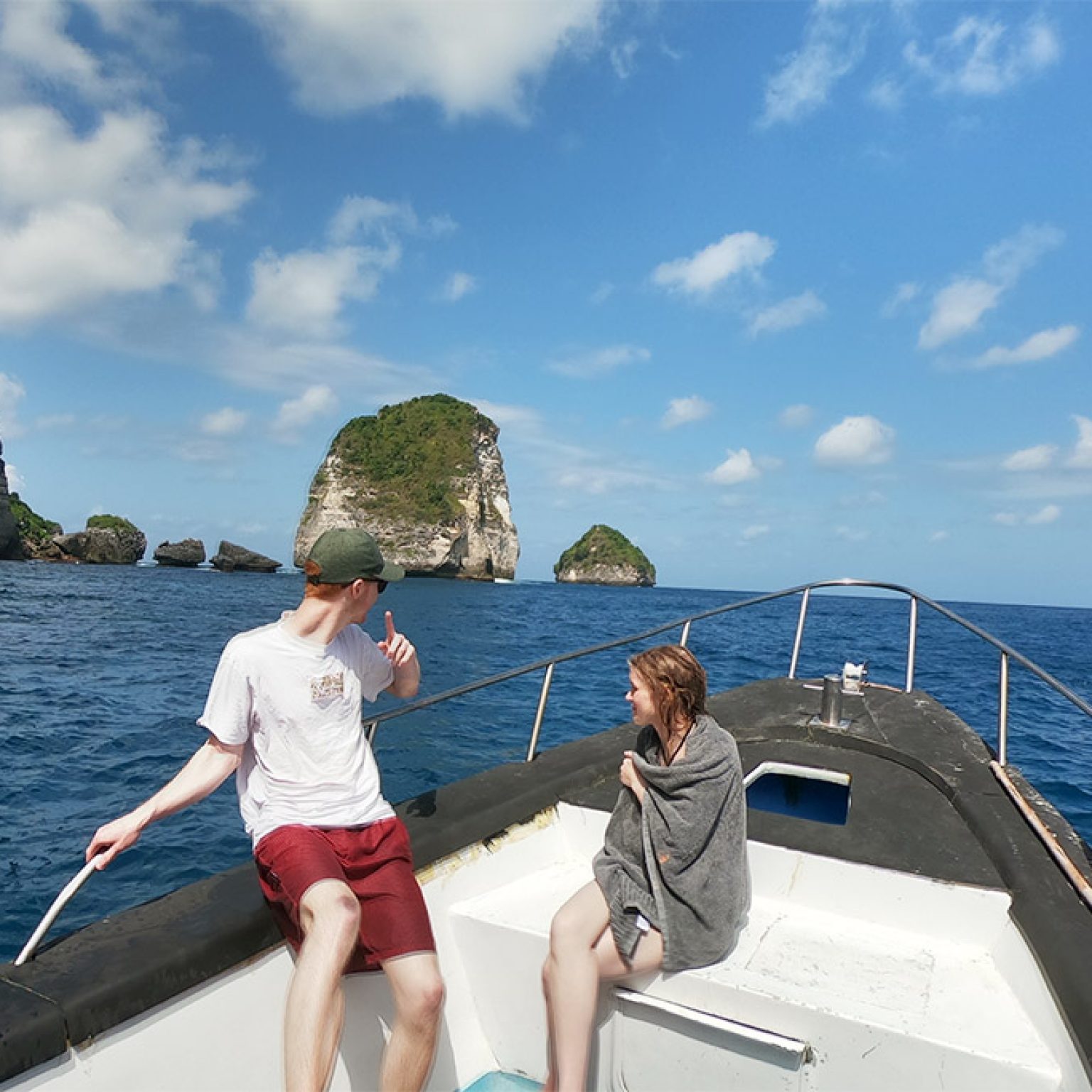Plan Your Travel Journey and Sent to Us! Explore The Best Nature Beach, Mountain, Wildlife, and Archipelago of Indonesia!
Top Location For Swimming with Manta in Nusa Penida
There are two manta ray dive sites a the south coast of Nusa Penida that provide stunning scenery, rugged u water topographies featuring swim-throughs, drop-offs, walls, and sl pes crashing waves and, of course, the opportunity to dive with one of the most majestic and graceful marine creatures of the ocean planet.
Both sites are located in front of the limestone cliffs and are best dived in flat and calm conditions. Big swells or strong winds can cause crashing waves that result in strong surges u water that can move divers back an 10 meters at a time! The bottom of these sites is mainly rock. with close-cropped corals as the su makes it difficult for upward grow Both sites havewhite sandy and large underwater boulders we have fallen from the cliffs over these makes excellent swim-throughs mantas at the cleaning station, pick one and hiding places for lobsters, resting of the sandy channels and follow it away bamboo sharks and small stingrays.
From the cliffs. The site slopes down to Manta Point (also known as Manta 1 around 18 meters, and then very gradually Batu Lumbung, which is situated on the alley, continues down to a large sandy southeasterly point of Nusa Penida.The — patch at 40 meters. On the sand, the scenery here is incredible: staggering, frequently large numbers of blue spotted limestone cliffs with waves beating at stingrays. Another option is to drop in on their feet, small white sand coves and the westerly side of the bay where there rock pinnacles. The entry point for the is a drop-off to 30 meters. Manta Point is dive is up against the cliffs in a small home to the larger, more mature mantas, bay, slightly west of the outcropping of, and on days when the water is planet two large rocks, the most southerly look rich the mantas will be on the surface e ing like a shoe. Divers enter the water, feeding with their cephalic fins rolled close to the cliffs and descend around ‘down, making their mouths seem like 8 meters where there is a huge boulder — enormous caverns, swimming towards which forms a natural cleaning station. These animals are harmless, though, for the mantas. These amazing creatures will come incredibly close if you will literally wait in line for the future — remain still and calm. Chasing them for swim up the rock and then hovering above a closer look is counterproductive as they it whilst the cleaner fish go to work. On will leave the area. days when there are many mantas here in Manta Bay (Manta II or Telaga Sakti s for cleaning, divers need not venture any also situated in the south coast of Pen, further than this one spot (see guidelines but not as far east as Mantal. The best s on diving with Mantas and Mola, page actually three large bays which get p 59). For a deeper dive, or if there are no progressively deeper from west to east fnm
The coral coverage here is predominantly hard coral and in the deeper areas, there are interesting coral formations, bommies growing upwards and patches of staghorn coral. Navigation is simple as it is just a case of following the cliffs around the bays. The mantas here tend to be smaller juveniles keeping to the shallows and feeding on the surface. Manta sightings here can be sporadic and less reliable than at Manta Point.
Being on the south side of Penida, both of these sites are prone to cooler water temperatures from July to October.

#mantapoint #Nusapenida #dive #bali
Dive or swim with manta rays

